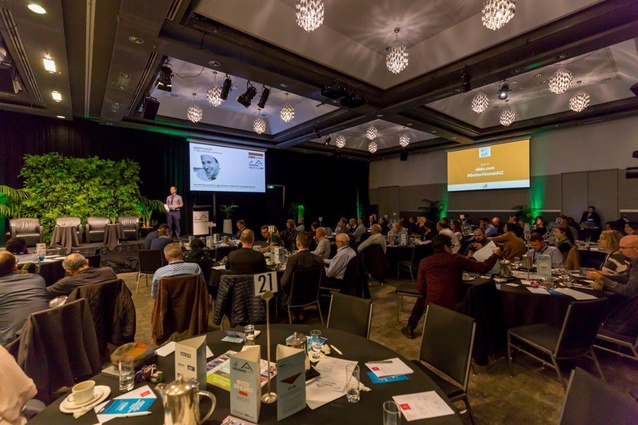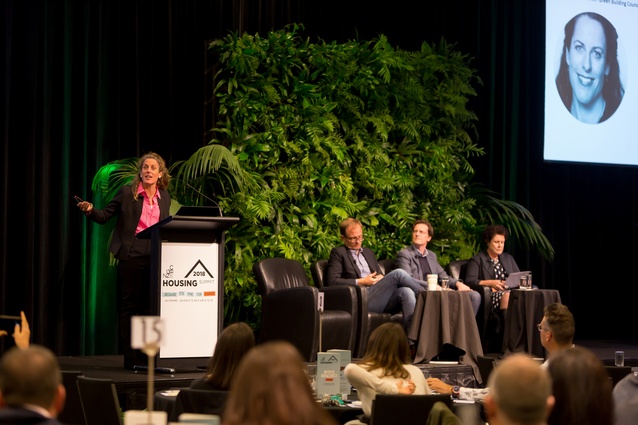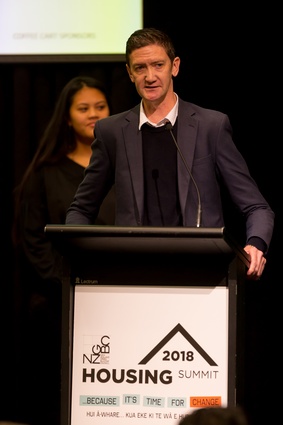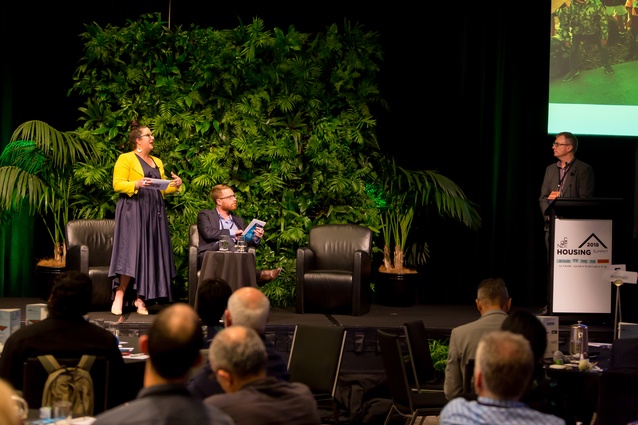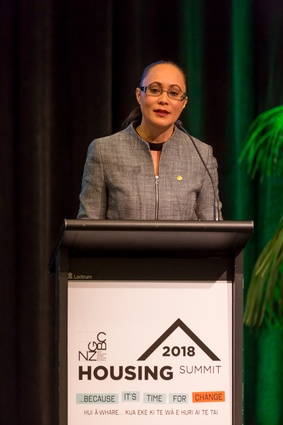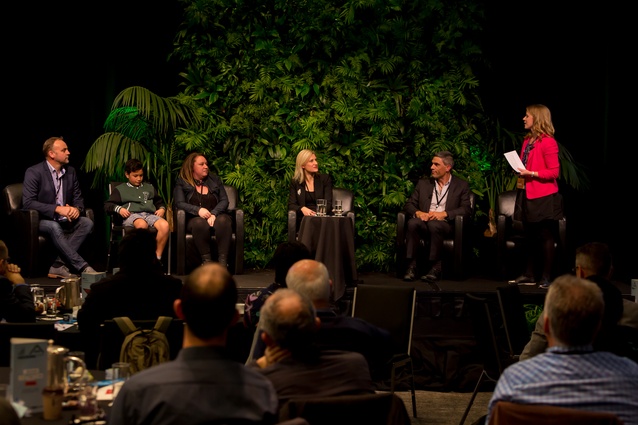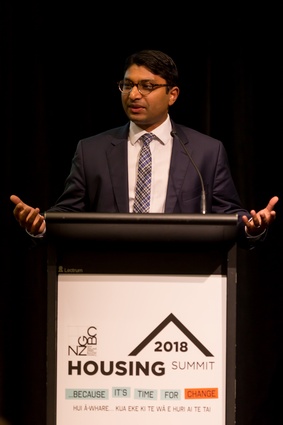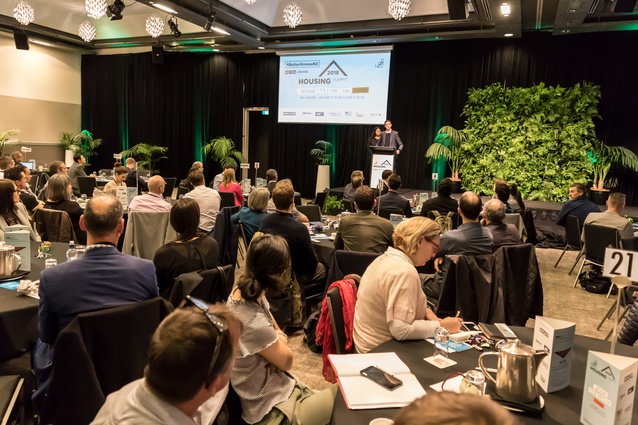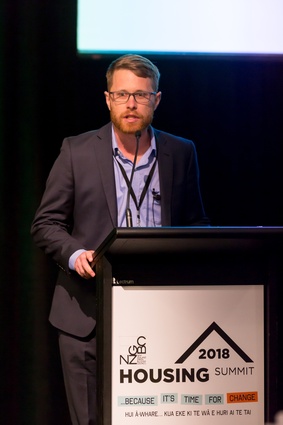Designing better homes for our whānau
Architectural designer and advocate for Māori housing issues Jade Kake shares her highlights and takeaways from the recent New Zealand Green Building Council Housing Summit.
Tēnā koutou katoa. Ko Ngāpuhi ratau ko Te Arawa ko Whakatōhea ōku iwi, ko Ngāti Hau me Te Parawhau ngā hapū, nō Whangarei-Terenga-Paraoa te Kāinga. Ko Jade Kake tāku ingoa – ko au te Poutohu Mātua o Te Matapihi he tirohanga mō te Iwi.
For the past few years I have been growing our kaupapa of Te Matapihi, an organisation that emerged from a call to action to establish an independent voice for Māori housing. We have been disappointed in recent years by the convening of multiple housing summits, particularly in Tāmaki Makaurau, that fail to adequately involve iwi and that, evidently, do not take the concept of Treaty partnership seriously.
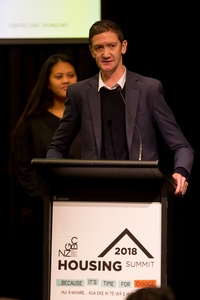
I am also an architectural graduate. I’m focused on working alongside our people to develop buildings, landscapes and communities that reflect their needs and aspirations and to engage carefully with the unique histories and culture of people and place. It was with these two perspectives in mind that I approached the New Zealand Green Building Council Housing Summit.
The conference began with a mihi whakatau led by Clay Hawke, nō Ngāti Whātua Ōrākei, noting that Ngāti Whatua fully support the theme and intent of the summit. Towards the end, Clay briefly remarked on the leading role Ngāti Whatua Ōrākei have taken in developing papakāinga at Takaparawhau.
To me, this was both a highlight and a missed opportunity – an entire keynote session could have easily been allocated to sharing Ngāti Whatua’s housing journey and experiences in development. Ngāti Whatua in particular has been active in development in the inner city and inner suburban area, but many other iwi on the isthmus and across Tāmaki Makaurau are actively engaged in development, either leading and/or partnering on housing projects across a variety of scales.
Jenny Salesa greeted the audience with a mihi in Tongan which also acknowledged the mana whenua of Tāmaki Makaurau. In her role as Associate Minister for Housing, Salesa spoke of establishing an urban development authority (or “housing commission” – a topic I have previously written about with an emphasis on establishing a leading role for iwi) for complex urban developments – perplexingly singular. Could this be a reference to a future role for Hobsonville Land Company as the developer of choice in Tāmaki?
Minister Salesa also emphasised the government’s commitment to environmental sustainability, and a promise to “lift urban design”. In her role as Minister of Building and Construction, she referred specifically to the opportunities presented through procurement, including skills development and training through government contracts.
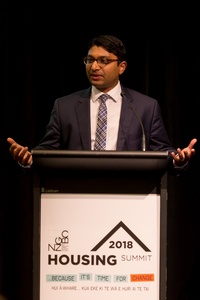
Economist Shamubeel Eaqub’s presentation picked up where the Minister left off, focussing on the potential of procurement in the delivery of the government’s Kiwibuild programme. With Kiwibuild homes slated to make up approximately one third of all new residential construction over the next ten years, the potential for procurement to create better social and environmental outcomes cannot be overstated.
Eaqub discussed the idea of requiring Homestar 6 or higher for all new Kiwibuild homes. He noted that although it is two to three per cent more expensive to build to Homestar 6 standard (compared to the current Building Code), the private benefits far outweigh the costs over time, and there are also substantial social benefits. The summit was timed to coincide with the release of a report on the topic, co-authored by Eaqub and entitled Codebreakers: Constructing KiwiBuild homes to a standard above the New Zealand Building Code.
After lunch, there was much discussion on the need for reform of the New Zealand Building Code. A range of international speakers spoke to the experiences of initiating building code reform in other contexts. Panellists noted that the Code is currently setup to produce a minimum viable product and that gaining acceptance above code is not incentivised and is fraught with uncertainty. They emphasised that a planned trajectory of upgrades, rather than a step change, would be required to radically raise the bar.
Matt Peterson, chief sustainability officer for the City of Los Angeles and chief executive officer of the Cleantech Incubator, noted that energy disclosure to buyers was required by law in California – a potential incentive for developers to build to a higher standard. Romilly Madew, chief executive officer of the Green Building Council of Australia, noted that this was also true of some Australian states. There were a few other interesting highlights including Richard Griffiths, former senior policy advisor at the UK Green Building Council, who discussed green mortgages, noting a correlation between energy efficiency and default rates.
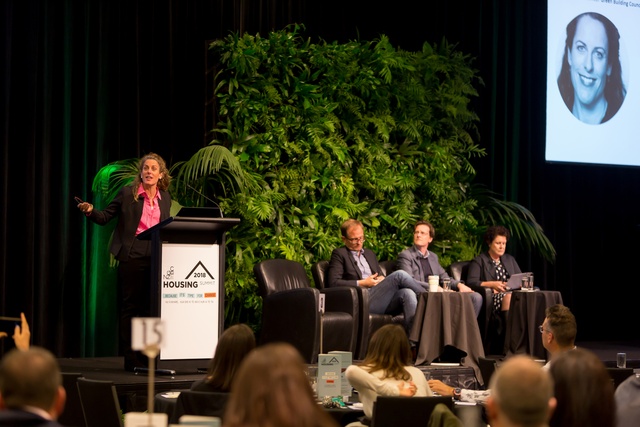
Sustainability engineer Rochelle Payne discussed her personal project, “The Living House,” and issued a challenge to architects to design out construction waste and to be persistent with seeking consent for alternative solutions. A few notable examples from her Living House project were the use of timber framing for a garage floor and the onsite disposal of greywater on an urban site. The opportunities for cross-sector dialogue and collaboration were particularly promising, as was the use of new technology to engage summit participants.
The engagement with Te Ao Māori throughout the summit was evident – from the greetings in te reo by both Māori and non-Māori speakers, to the use of te reo on conference signage and marketing collateral, to the gifts of poi, lovingly made by students of Te Kura Kaupapa Māori o Hoani Waititi Marae. I believe this was underpinned by genuine goodwill on the part of the New Zealand Green Building Council, and – I suspect – the tireless work of newly recruited events and industry engagement manager, Aroha Te Kanawa.
What was less successfully realised was a diversity of Māori speakers on the programme. Though it was fantastic to hear from Dr Rhys Jones from a public health perspective and Te Aorangi Corbett from a tenant’s perspective, the missing piece for me was the iwi perspective on development and the whakaaro of Māori built environment practitioners.
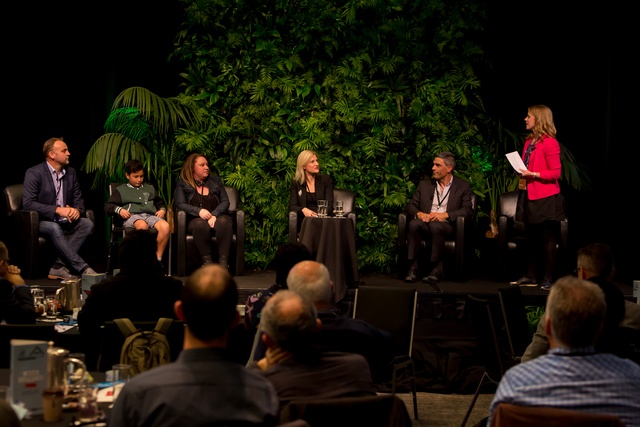
So what were the key take home messages? As an advocate, I believe procurement through Kiwibuild and Housing New Zealand Corporation’s own developments and urban development authorities legislation are the key current opportunities for better housing outcomes. Through legislation and procurement, we could ensure cultural and environmental sustainability are at the forefront of any new development and that a leading role for iwi was articulated at every stage of development and at all levels of decision-making.
As an architectural designer, I am now seriously considering designing our papakāinga homes to Homestar 10/Greenstar Communities standard, which will support our community’s aspirations to model best practice in environmental leadership and to provide warm, dry, affordable homes for our whānau.
It seems fitting to finish with the words of 13-year-old Tūwharetoa, a student at Te Kura Kaupapa Māori o Hoani Waititi Marae who made the poi I took home from the summit: “He pai ki au ngā mahi hou ka ako au mō te taiao.”

